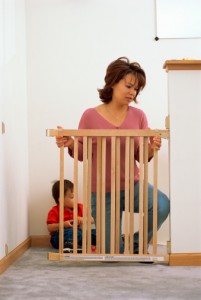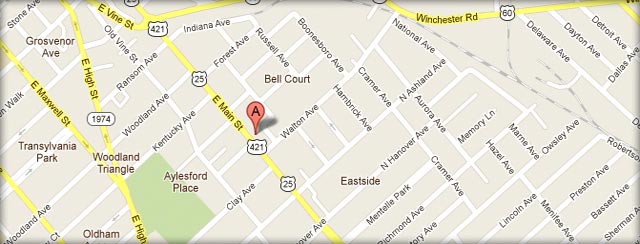- ATV accidents
- Brain Injuries
- Bus Accident
- Car Accidents
- Construction Accident
- Distracted Driving
- Drugged Driving Accident
- DUI
- Firm News
- Mass Tort
- Medical Malpractice
- Motorcycle Accidents
- Pedestrian Accidents
- Personal Injury
- Product Liability
- Safety
- Social Security Disability
- Truck Accidents
- Vehicle Accidents
- Workers Compensation
- Workplace Injuries

Nearly 2,000 children are treated in emergency rooms each year for injuries caused by improperly installed baby gates, according to a study recently published in the journal Academic Pediatrics.
Researchers from Nationwide Children’s Hospital in Columbus, Ohio, found that between 1990 and 2010, an estimated 37,763 children under the age of seven suffered injuries after falling through or climbing on baby gates.
Children aged two and under were primarily injured by falls down stairs after gates collapsed, according to the study. Older children tended to have more open wound and soft-tissue injuries resulting from contact with the gates.
The study concluded that given the increased rate of injuries – from 4 per 100,000 in 1990 to 13 per 100,000 in 2010 – more efforts need to be made to improve consumer education about how to use gates properly and ensure safety in product design.
Unfortunately, there are currently no federal safety standards for the construction or safety of baby gates. The Consumer Product Safety Commission has recalled several models of gates over the years due to reports of injuries caused by design flaws. Manufacturers are legally responsible for the products they produce and can be held accountable when a design defect creates a dangerous product.
In 2009, the Dorel Juvenile Group recalled one of its gates because of faulty hinges. In 2010, Evenflo recalled its Top of the Stairs Plus Wood Gate because the slats on the gate could break or detach, causing a risk of serious falls. At the time, there had been 142 reports of falls after the gates buckled, leading to injuries such as bumps, bruises, scratches and scrapes.
While there are no mandatory safety standards regulating baby gates, there are voluntary standards in place. Since 1976, the Juvenile Product Manufacturers Association has been certifying children’s products of all kinds, including baby gates. In the absence of federal requirements, looking for the JMPA seal on any baby gate that you consider buying is a good way to know that the product has been vetted by industry experts.
According to Consumer Reports, the JPMA certification on a baby gate means that it has met international voluntary safety standards for:
- Strength of components
- The size of openings to prevent body parts from getting entrapped
- The integrity of the latch
Using Your Baby Gate Properly Is Crucial
While it is important to buy a baby gate that is structurally sound, it is equally important that you understand how to use it. One of the chief problems identified by researchers and Consumer Reports is that parents don’t always choose the safest gates for the location they are trying to block off. A pressure-mounted gate at the top of a flight of stairs is more likely to collapse if a little person starts to push or climb on it than a gate that is mounted to the wall with hardware.
Another mistake that parents make is keeping baby gates around too long. Gates are designed for use around children aged six months to two years. Once a child has learned how to open a gate or climb over it, it should no longer be considered an adequate safety device.
Other recommendations:
- Only use pressure-mounted gates to block off the bottom of stairs or between rooms. All gates at the tops of stairs should be hardware-mounted.
- Avoid accordion-style gates without a horizontal filler bar at the top. The diamond-shaped spaces on the sides and v-shaped spaces at the tops have contributed to at least nine child deaths by strangulation, according to Kids In Danger, a children’s safety group.
- Select a gate with a straight edge and closely spaced solid vertical slats or a fine mesh weave that won’t easily allow for finger or footholds. Vertical slats should be less than three inches apart to prevent entrapment.
- Choose a gate that is at least three-quarters your child’s height, and 22 inches at a minimum.
- The distance between the bottom of the gate and the floor should be less than three inches so that a torso, head or neck can’t get stuck.
- Always read the owner instructions for use.
- Check for a clear warning label and contact information for the manufacturer, distributor or seller of the baby gate.
Most importantly, remember that baby gates are no substitute for adult supervision. Never leave a young child unattended in potentially dangerous areas of the home.

